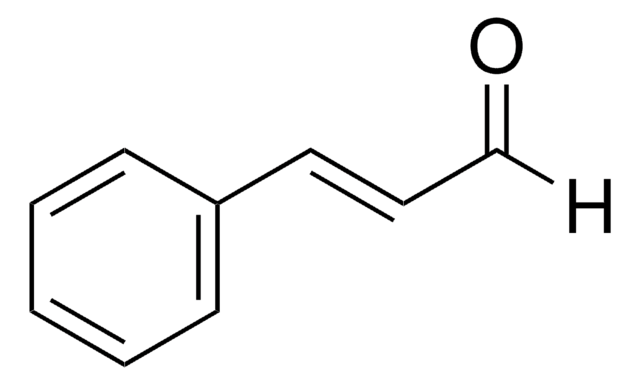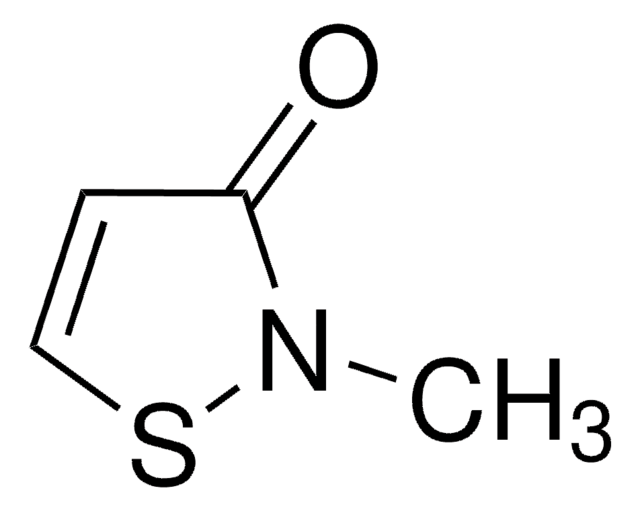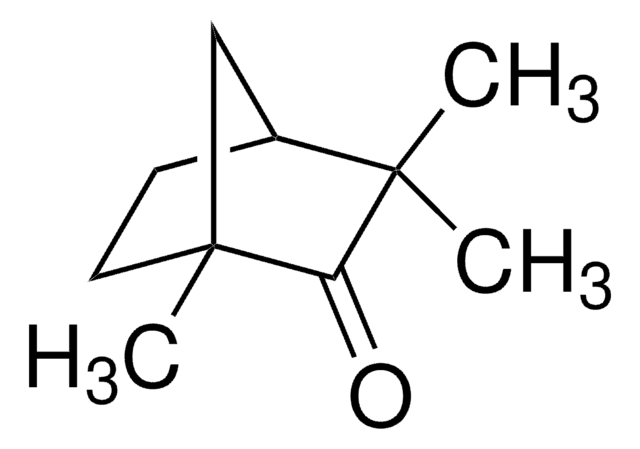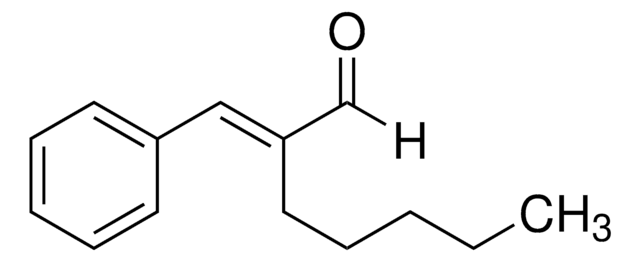82934
7-Hydroxycitronellal
Odorant used in allergy studies
Synonym(s):
7-Hydroxy-3,7-dimethyloctanal, Citronellal hydrate
Sign Into View Organizational & Contract Pricing
All Photos(1)
About This Item
Empirical Formula (Hill Notation):
C10H20O2
CAS Number:
Molecular Weight:
172.26
EC Number:
MDL number:
UNSPSC Code:
12352200
PubChem Substance ID:
NACRES:
NA.52
Recommended Products
grade
Molecular Biology
for molecular biology
Assay
≥95.0% (GC)
form
powder
density
0.92 g/mL at 20 °C (lit.)
storage temp.
room temp
SMILES string
[H]C(CC(C)CCCC(O)(C)C)=O
InChI
1S/C10H20O2/c1-9(6-8-11)5-4-7-10(2,3)12/h8-9,12H,4-7H2,1-3H3
InChI key
WPFVBOQKRVRMJB-UHFFFAOYSA-N
General description
7-Hydroxycitronellal is fragrant sensitizer added frequently to deodorants and perfumes. It is one of the allergens responsible for axillary dermatitis.
Application
Suitable for
- contact sensitization studies to identify allergens present in cosmetic preparations
- elucidation of molecular pathways related to allergic reactions
- analytical standard
Signal Word
Warning
Hazard Statements
Precautionary Statements
Hazard Classifications
Eye Irrit. 2 - Skin Irrit. 2 - Skin Sens. 1
Storage Class Code
10 - Combustible liquids
WGK
WGK 1
Flash Point(F)
Not applicable
Flash Point(C)
Not applicable
Personal Protective Equipment
dust mask type N95 (US), Eyeshields, Gloves
Choose from one of the most recent versions:
Already Own This Product?
Find documentation for the products that you have recently purchased in the Document Library.
Nadège Ade et al.
Toxicological sciences : an official journal of the Society of Toxicology, 107(2), 451-460 (2008-11-27)
Electrophilicity is one of the most common features of skin contact sensitizers and is necessary for protein haptenation. The Keap1 (Kelch-like ECH-associated protein 1)/Nrf2 -signaling pathway is dedicated to the detection of electrophilic stress in cells leading to the upregulation
Clarissa D Villarama et al.
Food and chemical toxicology : an international journal published for the British Industrial Biological Research Association, 42(11), 1719-1725 (2004-09-08)
The clinical relevance of patch test reactions is often difficult to determine. Use tests have been developed to further evaluate the significance of patch test results. We review studies that have defined correlations between the threshold concentrations at patch testing
S Heydorn et al.
Contact dermatitis, 48(6), 324-330 (2003-10-09)
Recently, we showed that 10 x 2% of consecutively patch-tested hand eczema patients had a positive patch test to a selection of fragrances containing fragrances relevant to hand exposure. In this study, we used repeated skin exposure to a patch
Susan P Felter et al.
Regulatory toxicology and pharmacology : RTP, 37(1), 1-10 (2003-03-29)
The National Academy of Science (NAS) risk assessment paradigm has been widely accepted as a framework for estimating risk from exposure to environmental chemicals (NAS, 1983). Within this framework, quantitative risk assessments (QRAs) serve as the cornerstone of health-based exposure
M Krasteva et al.
Clinical and experimental allergy : journal of the British Society for Allergy and Clinical Immunology, 26(5), 563-570 (1996-05-01)
The need to develop predictive tests which could identify potential allergens has been recognized for many years. There is as yet no accepted in vitro method for the assessment of contact sensitizers. We have tested the ability of a range
Our team of scientists has experience in all areas of research including Life Science, Material Science, Chemical Synthesis, Chromatography, Analytical and many others.
Contact Technical Service








